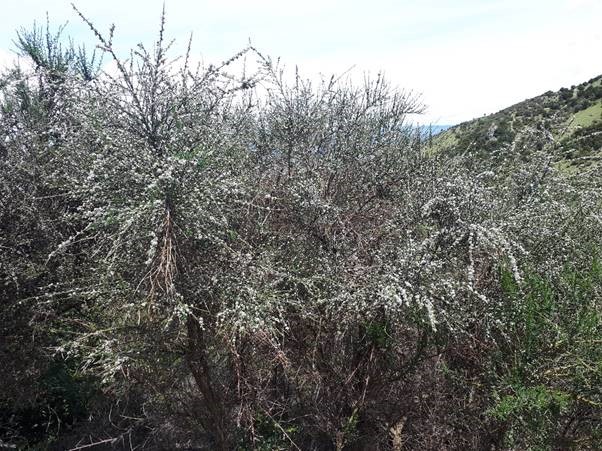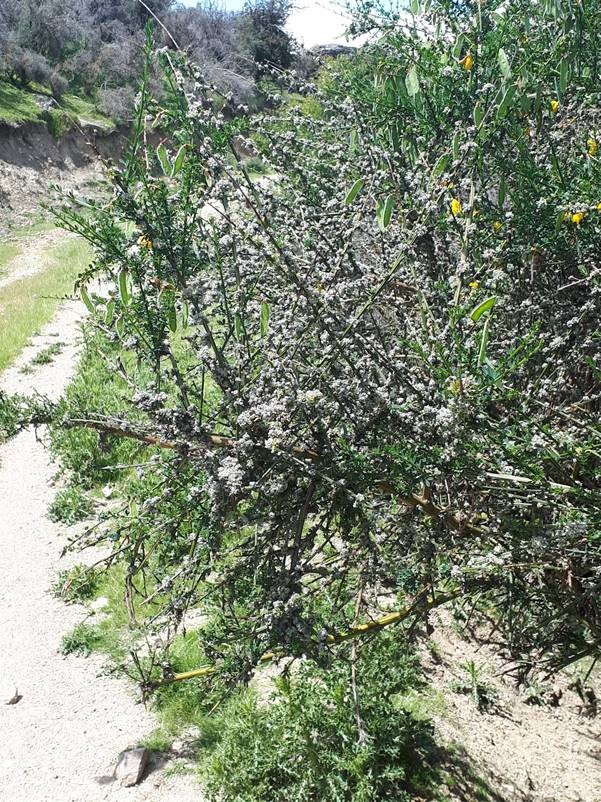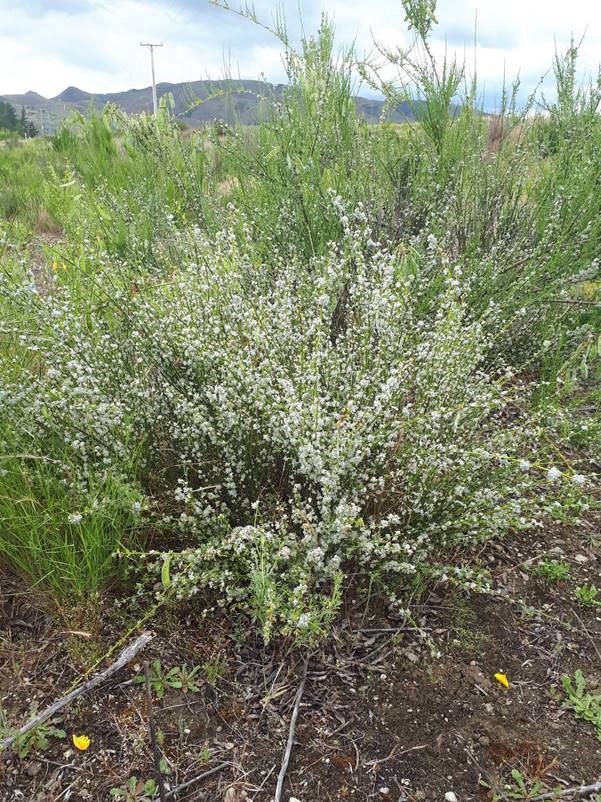The mites have been found in the Strath Taieri area up to 30 kilometres from release points, indicating a good spread and a strong infestation among broom plants.
Team Leader Biosecurity Compliance, Richard Lord, said the mites were having a “real impact” in some areas.
“What’s exciting is we’re finding the mites popping up in so many locations now. For instance, we found infestations of the mites right up the Taieri River, from Sutton to Hyde. They’re finding their way into new areas of their own accord, travelling for kilometres on the wind,” he said.
Mr. Lord said the mites prove that sometimes the best results require a patient and consistent strategy, “There’s still a long way to go—and there are no silver bullets in pest management—but we’re quietly hopeful about the long-term effectiveness of the broom gall mites.”
Introduced into Otago in 2012, the broom gall mite is a microscopic organism which colonises and feeds on broom, gradually forming white galls on the plants which can stunt their growth and eventually kill them. As its name suggests, the mite only attacks broom, making it an effective weapon against the invasive bush while protecting our native plants.
ORC’s Proposed Regional Pest Management Plan lists the aggressive and hardy plant, brought over by settlers in the 1800s, as a pest to be managed under sustained control programmes.
“We’re certainly keen to make new establishments of the mites in areas where’s it not present. The last thing we want to see is broom and gorse overtaking our iconic Otago landscape,” Mr Lord said.
In addition to ORC’s biocontrol measures, landowners have a responsibility to limit the spread of gorse and broom. 53% of Otago is currently designated gorse and broom free—including large areas of Central Otago and the Queenstown Lakes—which means that occurrences of the plants are low and should be dealt with individually by landowners.
“It’s important that people who only have a few broom plants on their properties don’t rely on the mites as a control method,” Mr Lord said. Landowner options for gorse and broom management include spraying, digging the plants out, cutting them down and treating the stumps, or applying granular herbicides.
ORC’s Proposed Regional Pest Management Plan and Biosecurity Strategy:
https://yoursay.orc.govt.nz/pestplan
More information about managing broom, and landowner responsibilities:
Manaaki Whenua Landcare Research info on Broom Gall Mites:
https://www.landcareresearch.co.nz/__data/assets/pdf_file/0018/20565/Broom_Gall_Mite_Dec_14.pdf

Broom plants infested with white galls produced by the broom gall mite in Otago.

Another broom plant infested with white galls produced by the mite.

Another broom plant infested with white galls produced by the mite.
